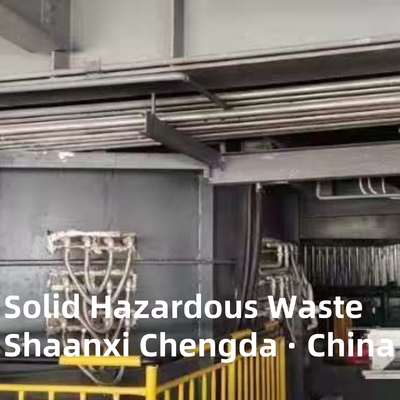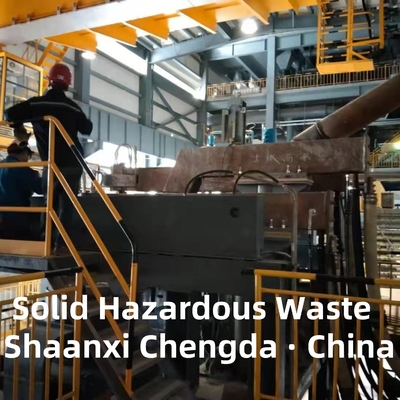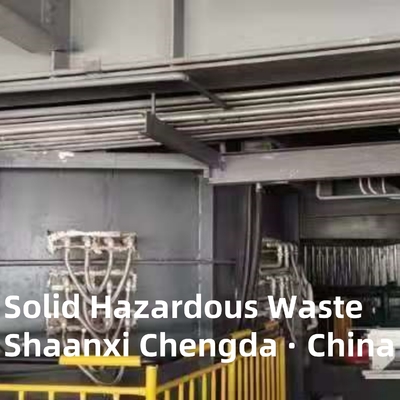All Products
-
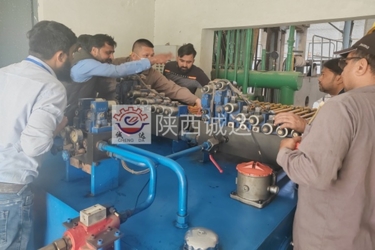 Syed Rashid Ahmed ButtShaanxi Chengda Industrial Furnace Co., Ltd. completed the commissioning of electric arc furnace, the workers carefully cooperated with Chengda engineers to learn and operate the equipment, showing the deep friendship and excellent cooperation between the people of China and Pakistan.
Syed Rashid Ahmed ButtShaanxi Chengda Industrial Furnace Co., Ltd. completed the commissioning of electric arc furnace, the workers carefully cooperated with Chengda engineers to learn and operate the equipment, showing the deep friendship and excellent cooperation between the people of China and Pakistan. -
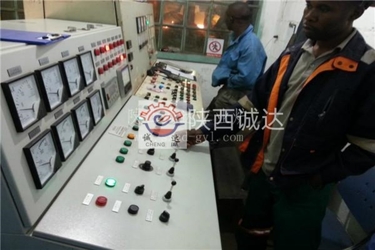 AboubacarAfter more than 1 month of intense production and debugging, 2 sets of heat exchange flue gas settling chamber equipment has been successfully put into operation ~ All the personnel involved in the project have worked hard! ~
AboubacarAfter more than 1 month of intense production and debugging, 2 sets of heat exchange flue gas settling chamber equipment has been successfully put into operation ~ All the personnel involved in the project have worked hard! ~ -
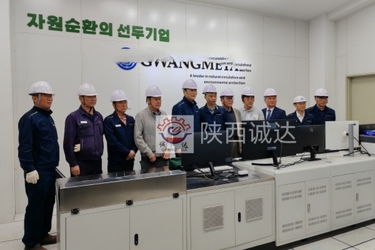 Ji-hwan【 Warm congratulations 】 Shaanxi Chengda Industrial Furnace Manufacturing Company in South Korea, North Chungcheong County precious metal smelting furnace equipment installation and careful manufacturing and strict commissioning, looking forward to the future in more fields to achieve mutually beneficial win-win cooperation!
Ji-hwan【 Warm congratulations 】 Shaanxi Chengda Industrial Furnace Manufacturing Company in South Korea, North Chungcheong County precious metal smelting furnace equipment installation and careful manufacturing and strict commissioning, looking forward to the future in more fields to achieve mutually beneficial win-win cooperation!
Contact Person :
Du
Phone Number :
13991381852
Solid Hazardous Waste Recycling And Processing Equipment
| Place of Origin | Shaanxi, China |
|---|---|
| Brand Name | Shaanxi Chengda |
| Certification | ISO9001 |
| Model Number | Solid Hazardous Waste |
| Minimum Order Quantity | 1set |
| Price | The price will be negotiated based on the technical requirements and supply scope of Party A |
| Packaging Details | Discuss according to the specific requirements of Party A |
| Delivery Time | 2~3 months |
| Payment Terms | L/C,D/A,D/P,T/T,Western Union,MoneyGram |
| Supply Ability | Complete production supply chain, supply on time, and meet quality standards |

Contact me for free samples and coupons.
WhatsApp:0086 18588475571
WeChat: 0086 18588475571
Skype: sales10@aixton.com
If you have any concern, we provide 24-hour online help.
xProduct Details
| Highlight | Solid Hazardous waste plastic recycling machine,waste plastic recycling machine Solid Hazardous,Solid Hazardous plastic waste processing machine |
||
|---|---|---|---|
Product Description
Solid Hazardous Waste
Solid hazardous waste recycling and processing equipment refers to specialized machinery designed to treat, detoxify, and recycle solid hazardous waste (e.g., chemical sludge, waste batteries, chromium salt slag, medical waste). Its core goal is to minimize environmental risks from toxic, corrosive, or reactive waste while recovering reusable resources (such as metals, energy, or raw materials), aligning with the principles of "waste reduction, recycling, and harmless treatment."
Core Equipment Types
The equipment system covers multiple processing stages, with four typical categories:
- Crushing & Sorting Equipment: Includes hazardous waste crushers (with anti-corrosion linings) and intelligent sorting machines (using AI + sensors). It crushes bulky waste into uniform particles and separates recyclable components (e.g., metals in waste electronics) from hazardous residues.
- Thermal Treatment Equipment: Mainly consists of incinerators, pyrolysis furnaces, and roasting kilns. It uses high temperatures (800–1200°C) to decompose toxic organic waste (e.g., medical plastic waste) into harmless gases (after purification) or recover energy (e.g., heat for power generation).
- Chemical Stabilization Equipment: Such as neutralization reactors and solidification mixers. It adds chemical agents (e.g., lime, chelating agents) to neutralize acidic/alkaline waste or fix heavy metals (e.g., lead, mercury), preventing their leakage into soil or water.
- Resource Recovery Equipment: Includes metal extraction devices (e.g., leaching tanks for waste batteries) and organic solvent recovery systems. It extracts valuable materials (e.g., lithium, cobalt from waste lithium-ion batteries) or reclaims reusable solvents (e.g., ethanol from chemical waste), turning waste into resources.
Key Functional Characteristics
- Safety & Environmental Protection: Equipped with anti-leakage structures (e.g., corrosion-resistant tanks) and exhaust gas/dust purification systems (e.g., activated carbon adsorption + bag filters) to avoid secondary pollution.
- Versatility: Designed to handle diverse hazardous waste types—for example, multi-purpose crushers can process both rigid waste (e.g., waste catalysts) and flexible waste (e.g., contaminated textiles).
- Intelligence: Integrated with IoT monitoring systems to track parameters like temperature, pressure, and pollutant emissions in real time, ensuring stable and compliant operation.
Typical Application Scenarios
- Industrial Sectors: Treats waste from chemical plants (e.g., resin waste), smelters (e.g., heavy metal sludge), and electronic factories (e.g., waste circuit boards).
- Municipal & Medical Fields: Processes medical waste (e.g., used syringes via incineration) and municipal hazardous waste (e.g., waste paint buckets via crushing + solidification).
- Battery Recycling Industry: Recovers lithium, cobalt, and nickel from waste power batteries through crushing, sorting, and chemical leaching.
Recommended Products



